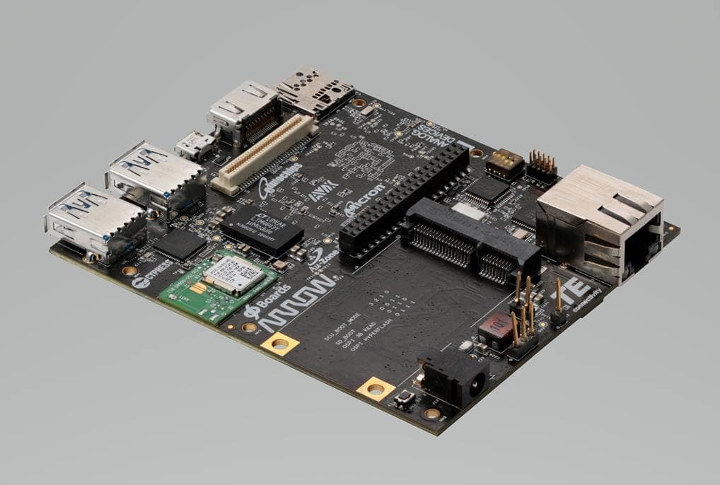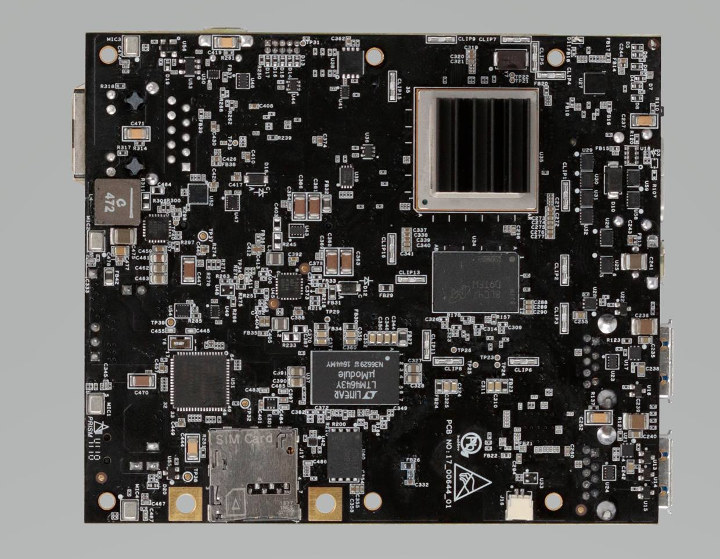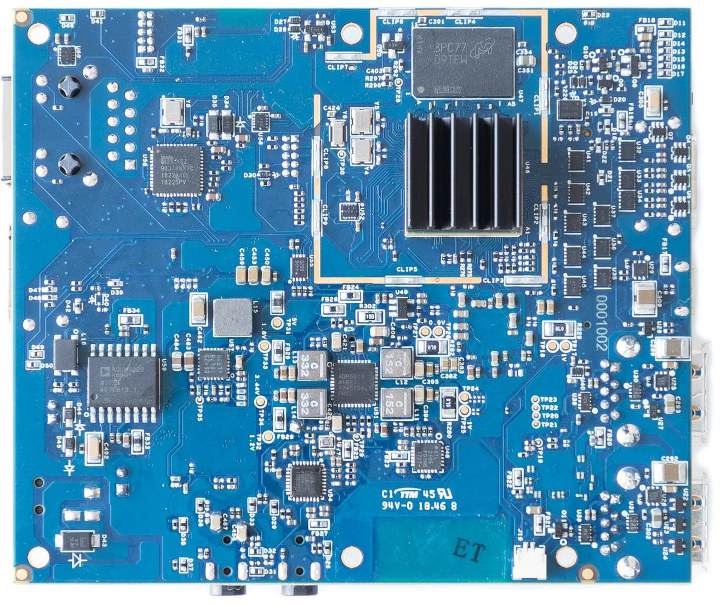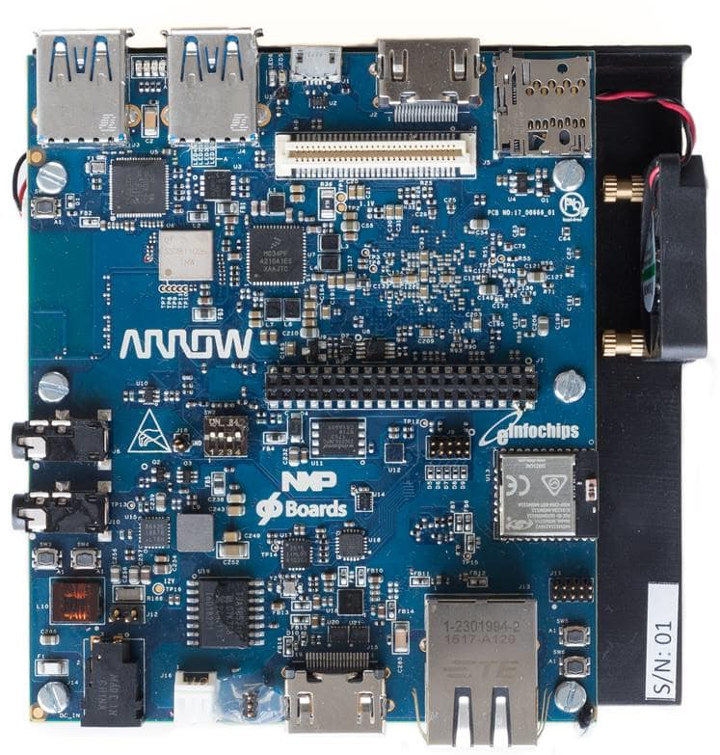We’ve already covered several 96boards platforms announced at Embedded World 2019, but we’re not quite done yet, as Arrow Electronics also introduced two NXP i.MX 8X/8M powered 96Boards CE Extended development boards with AI-ML board equipped with i.MX 8M quad core Arm Cortex-A35 processor coupled with 2GB RAM, an mPCIe slot for cellular connectivity, and Thor96 SBC featuring NXP i.MX 8M processor with 2GB RAM as well, but also two HDMI ports, a Thread and Zigbee module, and more.
Arrow AI-ML Board

AI-ML key features and specifications:
- SoC – NXP i.MX 8X quad core Arm A35 processor @ 1.2 GHz, Cortex-M4F real-time core @ 266 MHz, Tensilica HiFi 4 DSP Core, GC7000 Lite 3D GPU with 4x Vec4 Shaders with 16 Execution Units
- System Memory – 2 GB LPDDR4 @ 1,600 MHz Industrial Temp by Micron
- Storage – Micro SD card slot
- Video Output / Display Interface
- HDMI Output
- Dual MIPI Display support
- Video
- H.265 up to 4K @ 30 fps Decode
- H.264 up to 1080p @ 60 fps Encode
- Connectivity
- Gigabit Ethernet
- Cypress based 802.11ac WiFi and Dual-Mode Bluetooth wireless module;
- SIM card socket
- USB – 2x USB 3.0 ports, 1x Micro-USB B port
- Expansion
- 40-Pin Low-Speed Connector, 60-Pin High-Speed Connector with UART, SPI, I2C, GPIO, I2S, CAN, camera and USB
- mini PCIe socket for 3G/4G modem
- Misc – 6x LEDs
- Dimensions – 100 x 85 mm as per 96Boards CE Extended specification

Eventually, you’ll be able to buy the board, but it’s unclear when it will be available and at what price.
Arrow Thor96 Board
- SoC – NXP i.MX 8M quad-core Arm A53 processor @ 1.5 GHz, Cortex-M4F real-time core @ 266 MHz, GC7000 Lite 3D GPU with 4x Vec4 Shaders with 16 Execution Units
- System Memory – 2 GB LPDDR4 @ 1,600 MHz Industrial Temp by Micron
- Storage – Micro SD card slot
- Video Output / Display Interface
- HDMI Output + DSI to HDMI port
- Dual MIPI Display support
- Video
- H.265 up to 4K @ 60 fps Decode
- H.264 up to 1080p @ 60 fps Encode
- Audio – Analog Devices A2B multi-channel digital audio codec for microphone arrays and speakers
- Connectivity
- Gigabit Ethernet
- Cypress based 802.11ac Wi-Fi and Dual-Mode Bluetooth wireless module;
- Silicon Labs MGM111 Thread / Zigbee Module
- USB – 2x USB 3.0 ports, 1x Micro-USB B port
- Expansion
- 40-Pin Low-Speed Connector, 60-Pin High-Speed Connector with UART, SPI, I2C, GPIO, I2S, CAN, dual camera and USB
- mini PCIe socket for 3G/4G modem
- Misc – 6x LEDs
- Dimensions – 100 x 85 mm as per 96Boards CE Extended specification

Just like for AI-ML SBC, we don’t have availability nor pricing information, but the board is already listed on Arrow Electronics.
Applications and Software Support
Both boards target similar applications including home & building automation, drones, and low-energy applications thanks to the Cortex-M4F real-time core which can wake the Cortex-A cores only when needed to extend battery life.
The company will provide support for the Yocto OS Project in order to allow designers to customize and build their own Linux distributions best suited for their projects.
You may find a few more details in the Arrow announcement.
Thanks to Nobe for the tip.

Jean-Luc started CNX Software in 2010 as a part-time endeavor, before quitting his job as a software engineering manager, and starting to write daily news, and reviews full time later in 2011.
Support CNX Software! Donate via cryptocurrencies, become a Patron on Patreon, or purchase goods on Amazon or Aliexpress





